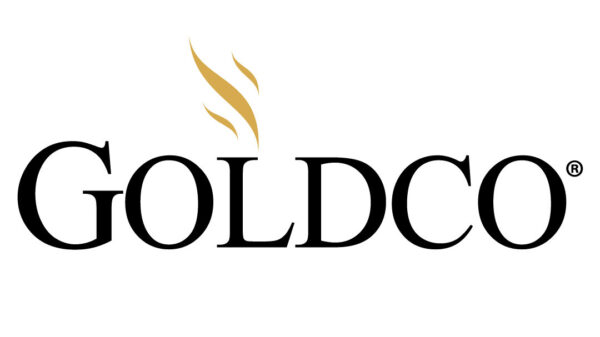Betterment Review: A Perfect App for Hands-Off Investors
Robo-advisors are all the rage for some investors. In this Betterment review, we’ll take a close look at how it stacks up against the competition. And while we’re at it, we’ll also compare it with traditional human advisors.

Opening a Betterment account online is simple. You just need a functioning email address and some basic pieces of information. Once you get in, you do need to provide Betterment with your address, date of birth, tax filing status, employment level and income level.
It’s worth noting that to open an account, you also need to provide your Social Security number. This may be off-putting to some. But it is mandatory because the company is a financial institution. So in order to comply with the USA Patriot Act, Betterment needs to be able to verify the account holder’s identity.
For anyone concerned about Betterment’s security features, it uses industry-approved security measures as robust as any bank. This includes browser encryption, identity verification and secured servers. I mention this because offering up sensitive information like this did initially give me pause. But after looking into Betterment’s security features, my fears were assuaged.
Now that we’re past the minutia, on to the important stuff…
Anyone not investing is losing money. Those who are not putting their money to work in some way are losing a portion of their wealth to inflation. But if you’ve gotten this far, you already know the value of investing. So how does Betterment come into the equation?
Look Ma, No Hands
Betterment is a low-cost computerized investing service. The company touts itself as a way to make investing easy and accessible to anyone. And it certainly does that. There is no account minimum. And Betterment charges a mere 0.25% of assets under management (AUM) annually. This is about as low as it gets for the cost of a financial advisor.
Where Betterment shines though is its ability to cater to individual investors’ needs. Upon signing up, users are asked what their goals are. Are you saving for education? Are you looking to build an emergency fund for surprise expenses? Maybe you’re just looking to fund a major purchase in the not-too-distant future. But if none of these apply, you can just as easily choose a general strategy to put your money to work.
Once you choose your strategy, Betterment asks what your financial goal is. Then it asks how you would like to invest.
If you’re agnostic about where your money is earned, it directs your money toward low-cost index-tracking ETFs and other funds that are tax-efficient. There is also the option to target investment opportunities that are socially responsible. This strategy targets ETFs that have been screened for positive environmental and social criteria.
Once you’ve made your decisions on the questions above, all that remains is to start funding your account. The rest is taken care of by the robo-advisors tasked with making you money. And there is no minimum deposit to get things started or keep them going. Betterment puts every cent in the account to work by taking advantage of fractional shares when necessary. It’s a completely hands-off approach to investing.
Reviewing Betterment: It Does Banking Too
A Betterment review wouldn’t be complete without noting that it’s not just for investing. Betterment also offers competitive bank account options. And there are two to choose from…
- Betterment Cash Reserve
- Betterment Checking.
The first is Betterment Cash Reserve. The benefit of this is that money stored in a cash reserve account accrues a competitive annual percentage yield (APY). Money in this account is FDIC insured – just as is money in other bank accounts. There is no minimum balance and no fees on balances, and the number of withdrawals is unlimited.
The other option is Betterment Checking. While this doesn’t come with an APY, it does feature zero account fees, no overdraft fees and no minimum balance requirement. And the Betterment Visa debit card you receive when opening this account comes with worldwide ATM fee reimbursement.
Either of these options is ideal for folks who like to keep all of their money in the same place. And it makes adding money to your investment account about as easy as it gets. But even if you don’t bank with Betterment, the investment process can be as easy and regular as you want it to be.
A Smarter Way to Invest
Another advantage of Betterment is its Smart Deposit feature. There are similar investing tools out there, like Acorns (and here’s a full Acorns review). But while that platform is triggered to deposit spare change into an investment account, Betterment lets you set the parameters.
For starters, Betterment allows you to schedule regular deposits at an amount of your choosing. Want to invest $100 every payday? No sweat. Do you prefer monthly deposits? That’s an option too. Naturally, you can also make a one-time deposit as well. But the brilliance of Betterment’s Smart Deposit feature is that you can also set a trigger in your checking account to make a deposit in your investment account. Here how it works…
In this Betterment review, let’s imagine you’ve got $10,000 in your checking account. That’s plenty for most emergencies. By using Smart Deposit, you can have anything over that amount trigger an investment. Now, you can set the triggering amount to whatever you want, but let’s stick with $10,000 for this example.
Let’s say you had a particularly frugal couple of weeks. You didn’t really dip into the checking account, and payday rolls around. Since you feel perfectly comfortable with $10,000 in the bank, the Smart Deposit program will roll the money above $10,000 right into your investment account.
With this, there’s no need to set an arbitrary date to invest. No need to pick a random dollar amount to invest. And you’ll be adding more than spare change to your investment account. With this feature, you can also set up a maximum deposit. This is useful for those who see money come in and out of their checking accounts quickly.
If you get paid $2,000 for a freelance job while your account is at its threshold, you might not want all of that to go into your investment account. So you can set a maximum deposit amount that won’t take your checking account back down to its baseline.
What About the Professionals?
Betterment almost seems too good to be true. Compared with typical advisor-managed portfolios, Betterment has been back-tested and outperformed them 88% of the time. That alone is no small feat. On top of that, let’s go back to the fees and minimums.
Remember, Betterment charges a 0.25% AUM fee annually. With $10,000 in your investment account, it’ll cost you $25 a year. If you’ve got $500 in there, that adds up to $1.25.
If you want a more personal approach, the average financial advisor AUM fee is 0.95%. But some charge a fixed fee. Others operate on performance-based fees – if the portfolio outperforms, the advisor gets a cut. And if you want to talk to them in person or on the phone… well, there’s usually a pricey hourly fee for that too.
The Bottom Line on Betterment’s Review
There are tons of ways to invest these days. And there’s no shortage of investment opportunities out there. But if you’re just not sure where to get started, I’d make a strong argument that Betterment is worth a look.
The only drawback is this won’t scratch the itch for active investors. If you’re someone who wants to tinker regularly with your portfolio, Betterment might not be for you. If you’re interested in trading options and shorting stocks, there are better alternatives for active traders, like Robinhood, Webull or a more traditional online brokerage account.
In fact, if you’re interested in becoming a more active trader, sign up for the free Trade of the Day e-letter. You’ll receive daily insight into the trends moving tomorrow’s markets. But if you’d prefer a more passive approach, setting up a Betterment account is certainly worth the effort.
Read Next: Stockpile Review: A Simple Way to Give the Gift of Stock
About Matthew Makowski
Matthew Makowski is a senior research analyst and writer at Investment U. He has been studying and writing about the markets for 20 years. Equally comfortable identifying value stocks as he is discounts in the crypto markets, Matthew began mining Bitcoin in 2011 and has since honed his focus on the cryptocurrency markets as a whole. He is a graduate of Rutgers University and lives in Colorado with his dogs Dorito and Pretzel.





